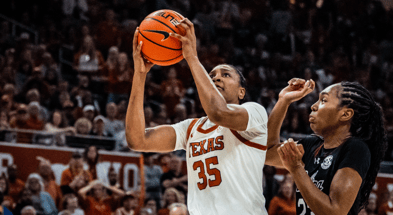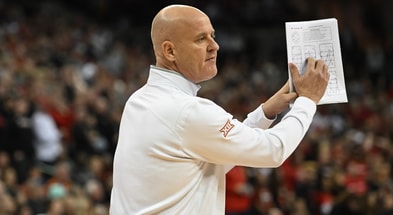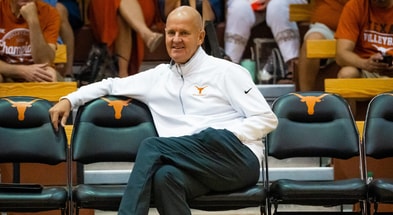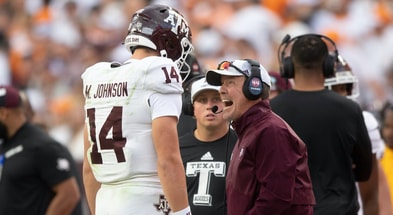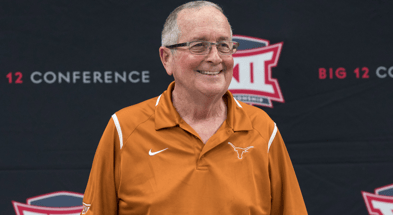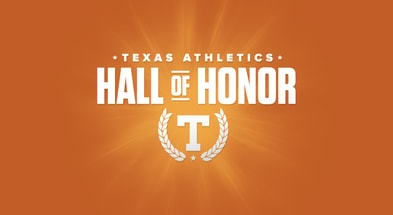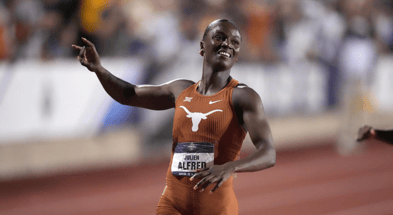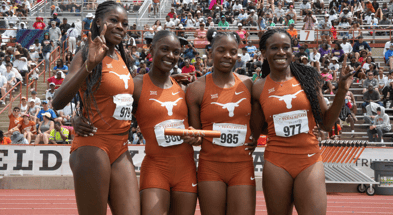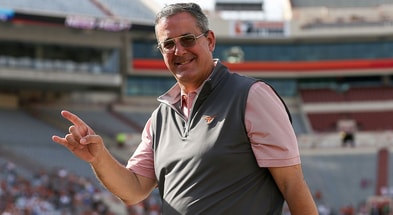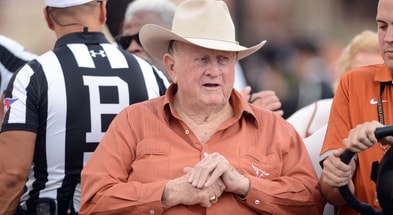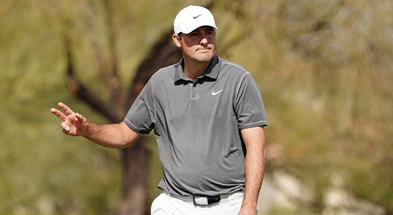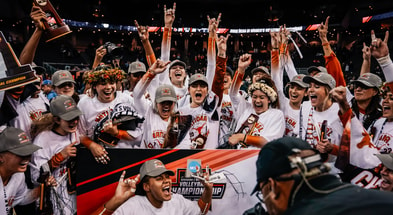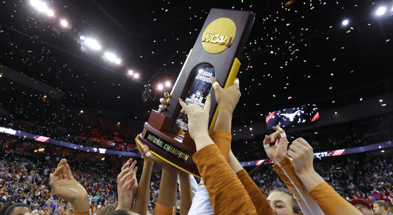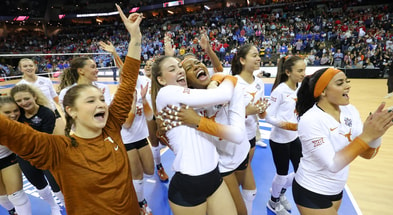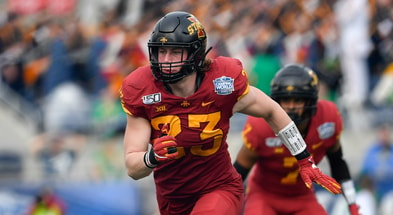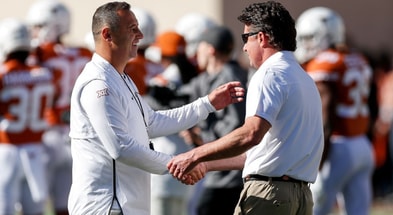Five position changes that could change the Big 12 in 2022
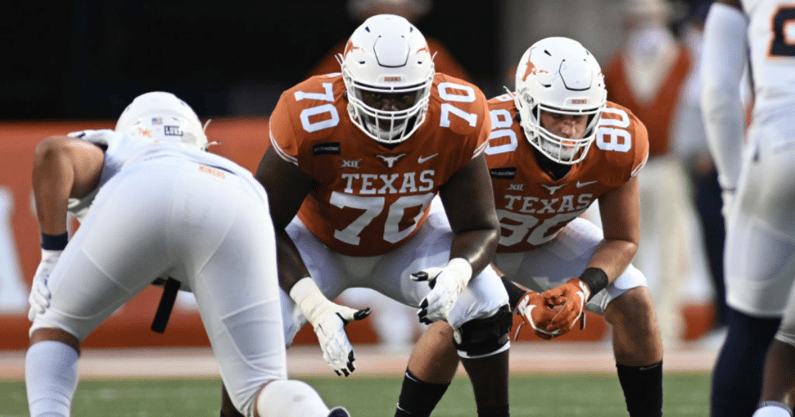
The Big 12 is a league with a history of innovation, as I’ve heavily chronicled in the written word, and many of those innovations have related to teams manning positions which are hard to find good athletes with players they moved from other positions.
For instance, when Brent Venables first came to Oklahoma under Bob Stoops back in 1999 they made several position moves to try and increase the athleticism of their team. One extremely important move was to bump safety Roy Williams down into a standard down nickel position, which powered a National Championship in 2000 and a nationally competitive season in 2001.
The 2021 season was very heavily influenced by Baylor moving linebacker Abram Smith (back) to running back, where he subsequently lead the team with over 1,600 rushing yards. TCU long gained advantages under Gary Patterson for their ability to spin safeties into linebackers and find enough athleticism to withstand spread attacks.
The ideal time for a position change is in the winter, giving a player a chance to sit in meetings and use the offseason program to shape his body and skillset for whatever assignments his new role will entail. Good teams are typically built in the spring and fine-tuned in the fall. With spring practices taking place across the Big 12 there have been a few noteworthy position changes which could spell a deep impact on the upcoming season.
Iowa State’s Anthony Johnson: Cornerback –> strong safety
This one surprised me for just a second, but it’s really one of the most natural adaptations in the world. The stated reason for this move has been centered largely around what’s best for Johnson, the COVID senior is a good player but has a much better chance of getting drafted as a known quantity at safety than a post-graduation position change. He’s not an NFL cornerback so he was going to have to move to safety sooner or later. Campbell’s staff is facilitating the “sooner” option.
Iowa State very rarely has NFL cornerbacks, they aren’t terribly common out in Iowa and the Cyclones are consequently one of the last dogs to the recruiting bowl when trying to pry great skill athletes from other locales. The whole point of their Flyover Defense (their particular 3-3-5 with three deep safeties and drop eight coverages) is to allow the defense a myriad of ways to layer coverages and protect their cornerbacks from having to cover receivers 1-on-1 in space. In fact, their strong safety position (the widest safety) is often isolated in space as much or more than the cornerbacks and within closer proximity to the quarterback.
Iowa State had to move Greg Eisworth there several times over the last few seasons simply because he was one of the only athletes on the back end with the hips and speed to hold up.
Guess which position Anthony Johnson is moving to this spring?
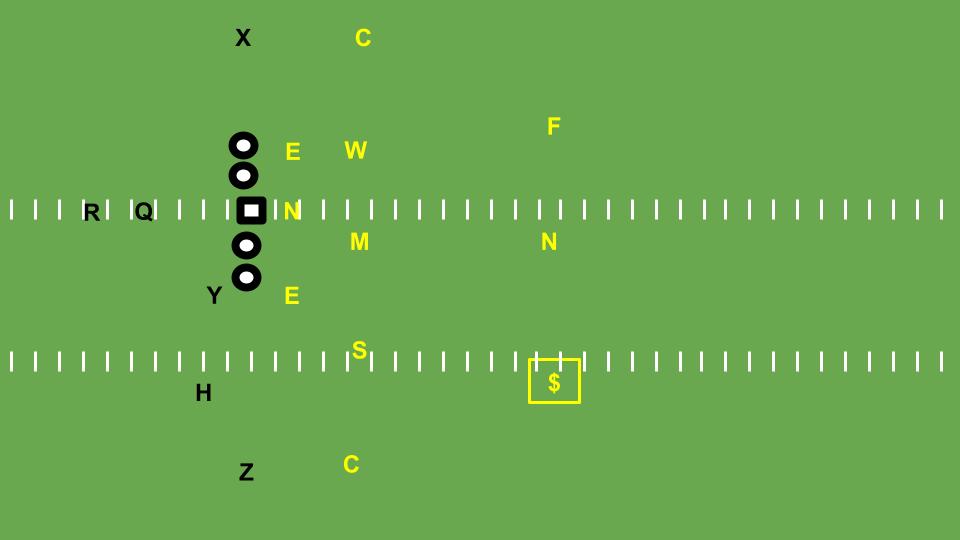
The strong safety plays behind the Sam linebacker, who is necessarily an underneath player who needs help over the top (Mike Rose in recent seasons) from the strong safety or nickel safety. Sometimes the strong safety drops down over the slot like a nickel corner, other times he’s covering wide grounds from the far hash.
So while this move will give Johnson a chance to play safety and audition his skills for the NFL, for Iowa State this move is actually either net neutral or potentially even a boost. He’ll still be manning a difficult position and his ability to play off-man coverage on a slot receiver actually increases their optionality in what sorts of schemes they can play. With the other two safety positions manned by a pair of big, physical, downhill players in Beau Freyler (6-foot-2, 205 pounds) and Craig McDonald (6-foot-3, 210 pounds), adding coverage skill to the back end had to be a priority for the Cyclones this offseason.
They’ll have that now with Johnson, whereas cornerback is a position where they have a few solid returning players (Tayvonne Kyle and T.J. Tampa) and a system which is designed to help non-elite athletes hold up in space. Having an elite cornerback would be better for Iowa State (or anyone) than having a great safety, but Anthony Johnson is not an elite cornerback and he might be a great safety. So this is probably an upgrade, even if it ostensibly has been done in service of Johnson’s career.
Anyone who thinks Iowa State won’t continue to be good on defense in 2022 is fooling themselves. Matt Campbell and his staff have consistently used position changes (Joel Lanning to Mike linebacker, Mike Rose to Sam linebacker, Will McDonald to defensive end) to effectively boost the overall athleticism and versatility of their defense.
Texas’ Christian Jones: Left tackle –> Right tackle
We’ll see if this sticks or not, but there’s good reason to believe it will.
Christian Jones is a very typical Big 12 sort of story, despite attending the blue chip rich University of Texas. He was rated as only a mid-level 3-star coming out of Cypress Texas in the 2018 recruiting class. Despite having elite measurables at 6-foot-6, 285 pounds with true athleticism, he was a recent convert to the game of football and was deployed in a Wing-T sort of offense where he received virtually zero instruction on the art of the kick step. Hence the relatively low ranking.
Texas took him as an athletic upside player and come 2020, they strangely moved the very solid Derek Kerstetter inside to center to make room for Jones at right tackle. This went very poorly. The kick step wasn’t ready and he was eaten alive in pass protection scenarios in several big games when left isolated, which then limited Texas’ ability to execute the 5-wide passing schemes Sam Ehlinger thrived in and which their depleted receiving corps needed to help them get open.
Tom Herman lost his job and in came Steve Sarkisian and new O-line coach Kyle Flood. Christian Jones was then PROMOTED to left tackle and carefully developed over the offseason in hopes his now 6-foot-6, 320-pound, still athletic but unrefined skill set could be an answer at tackle. This went poorly, though it wasn’t as bad as in 2021 due to Texas’ newfound emphasis on double tight end sets, guard-pulling play-action, and a running-back focused run game. When he was asked to go 1-on-1 with top Edge rushers, he couldn’t hold up.
Now? He’s at right tackle while Andrej Karic, who tried unsuccessfully to supplant him in 2021, is the first string left tackle to open spring practices. The unspoken component here though is Texas’ massive 2022 O-line class, which includes 5-star Kelvin Banks, a 6-foot-5, 315 pound athlete who comes in with even more athleticism and much more refined technique than Jones received in his football education.
The most likely scenario here is one in which Texas moves Jones, who simply isn’t great 1-on-1 in pass protection against good edge rushers but is otherwise a fine O-lineman, back to right tackle to get comfortable and then makes left tackle a battle between Karic and Banks. If Karic (or potentially Jaylen Garth, who is a solid athlete and formerly well-regarded recruit in his own right who’s finally recovered from bad knee injuries) seizes the job in spring, good for Texas. If he loses the battle in the fall to Banks because the freshman is a phenom (or perhaps Cameron Williams), that’s great too.
Texas’ O-line really looks pretty solid for 2022 with three returning starters and several big, athletic run blockers. Their main weakness is the same one most lines have, they need a left tackle they can trust to block a Will McDonald (or at least a Tyree Wilson) from time to time without getting the quarterback killed. If they can fill in that hole decently well, the whole offense comes alive. The move of Christian Jones seems to be telegraphing that the intended solution will come from a youth movement, either promoting Karic (or Garth) or else one of the incoming freshmen.
Kansas State’s Jax Dineen: Fullback –> running back
Kansas State’s Shawn Robinson: Quarterback –> Jack safety
I have to mention both of these, even though the former may not mean what I think it means and the latter is not a new position change.
Big 12 fans can probably remember Shawn Robinson as the guy who lead the ever-talented DeSoto High School to their first ever State Championship (2016) and then headed to TCU where he had a turnover and injury-plagued season in 2018 before transferring to Missouri. While with the Tigers, Robinson moved to safety at the end of the 2020 season and was a rotational player there in 2021.
Top 10
- 1Breaking
Nico Iamaleava
Tennessee & QB under contract negotiations
- 2New
Arch Manning
Texas QB explains staying
- 3
Mark Pope
Receives raise, extension
- 4Hot
QB Mock Draft
Predicting landing spots for Top 12
- 5
Pat McAfee
Host talks Mary Kate Cornett lawsuit
Get the On3 Top 10 to your inbox every morning
By clicking "Subscribe to Newsletter", I agree to On3's Privacy Notice, Terms, and use of my personal information described therein.
He’s now a 6-foot-1, 231 pounder who’s expected to play Jack safety in Kansas State’s flyover defense. In the diagram above of the Iowa State version of the scheme, he’d be the “N” as the Cyclones call their middle safety the nickel. The Jack safety is like a safety/linebacker hybrid, such as Roy Williams played for Oklahoma, but the fashion now is not to play those guys over a slot but in the middle of the field where they can fit the run quickly from an over the top alignment. It’s like a Tampa 2 Mike linebacker (think Brian Urlacher), only they start at depth rather than dropping there at the sign of a pass.
Safeties aren’t terribly difficult to find but a 231 pound dude with plus athleticism and a quarterback’s mind and eye for the field and the game can still be uniquely effective, especially in this new position in defensive football. So while Robinson wasn’t exactly All-SEC, he didn’t play Jack safety and this could still be an interesting and highly effective move for the Wildcats. In his snaps last year at Missouri he was an impactful box safety, that’s probably where he shone brightest, and that’s exactly what he’ll be asked to do at K-State. Essentially he’ll be a periodic, extra, unaccounted-for linebacker.
I’ve mentioned the Jax Dineen move already on this blog. They’re putting him at running back, under the stated reason of adding depth and making use of his running ability and protection skills. The Wildcats certainly need depth at running back but, honestly, if Deuce Vaughn misses significant time for them next season it’ll be hard to recover from it. He has obvious value in short-yardage, where Vaughn lacks the ability to run through arm tackles by defensive linemen.
However, I’m also highly expectant of seeing some stuff like this:
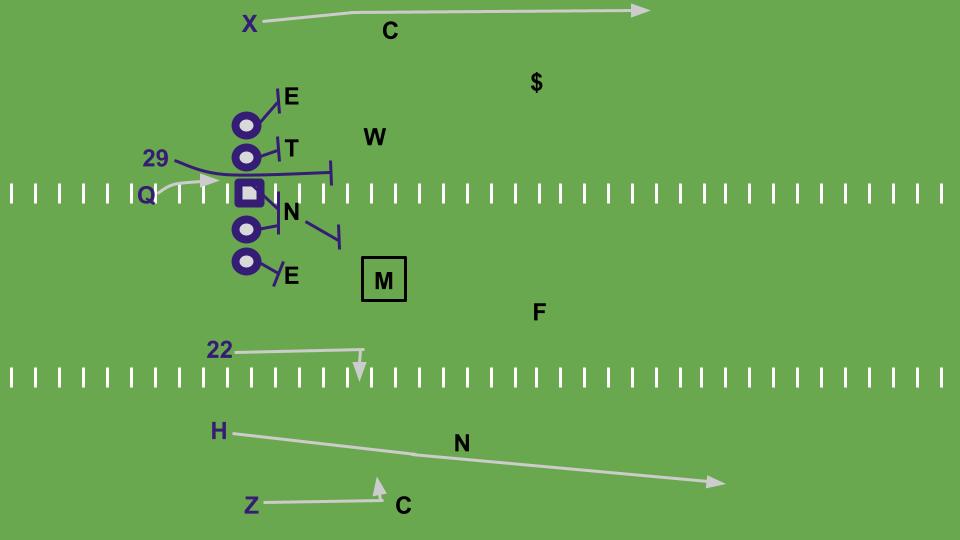
This is very high level spread-option football. Option 1, stick/option route by Deuce Vaughn flexed out on a linebacker. Option 2, draw/iso football with Adrian Martinez running behind a double team and lead insert by the 250-pound Dineen. How do you get numbers to stop either play? Either you drop the Mike out and drop the strong safety down to stop the quarterback iso play (still 7-on-6 for the offense) or you drop the free safety down to man up Vaughn and hope the linebackers can beat blocks.
You can also mix in the dreaded fullback POP pass from this, which K-State used to call “Tazer” (LOL) and which you can still find Oklahoma fans complaining about online.
Seriously, scroll down and you’ll immediately find comments complaining it should have been flagged. If you were surprised by Oklahoma fan’s collective reaction to losing Bedlam, Lincoln Riley, and Caleb Williams in 2021 you must have missed their reaction to losing this game (31-30) and finishing the year 8-5.
Martinez is well suited to the quarterback RPO run game and draws/iso in particular because he ran them for three years at Nebraska. Giving him a 250-pound backfield escort to go along with a hybrid weapon at running back in Deuce is very, very much in line with Snyder-ball, which is how new offensive coordinator Collin Klein learned offense.
Baylor’s Josh Fleeks: Wide receiver –> running back
This one caught me by surprise but it makes a certain amount of sense. Fleeks was a running back/receiver hybrid in high school Matt Rhule was trying to convert into a true wide receiver because of his speed. He was listed last year at 5-foot-11, 192 pounds, which is a little light at running back but he’ll have this whole offseason to reshape his body for trench duty and perhaps he’s already heavier than this listing.
The main thing to watch here is that whoever plays running back for Baylor is likely to end up looking pretty good because they return four starters on the line, have a great system they execute well, have several good blocking tight ends, and they also run the ball in advantageous situations. One of offensive coordinator Jeff Grimes’ best tricks is to run their base wide zone play in situations like 3rd-and-6.
It’s hard to defend a good wide zone run from a typical 3rd-and-6 defensive package and it often resulted in setting up short-yardage 4th downs which Grimes was also aggressive in pursuing. They did the same thing at BYU, which made me a little hesitant about Zach Wilson as a pro prospect, but it’s unquestionably an effective strategy for moving the chains in college.
Taye McWilliams is currently no. 1, and at 6-foot-1, 211 pounds he looks the part for “Abram Smith replacement.” But Fleeks could end up being the no. 2 back and still getting 100+ carries. Trestan Ebner got 148 and Smith 257, there’s a lot of work to go around in an offense where you run the ball on 3rd-and-6.
There may be some other position changes which help define the 2022 season but these stand out for how they could define the approaches of these contenders.
Which position change will have the biggest impact in 2022? Discuss for free on the Flyover Football board!

